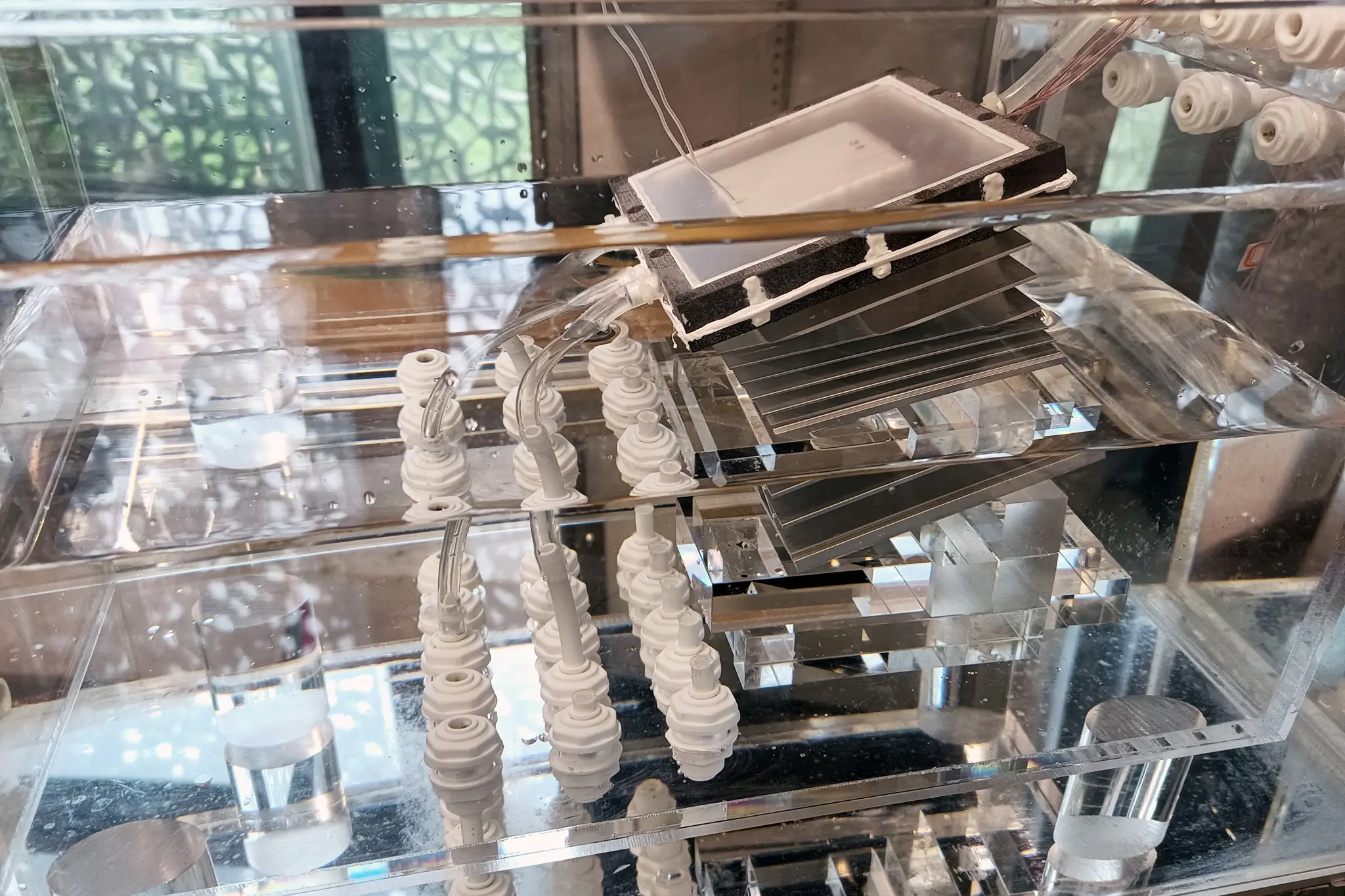- cross-posted to:
- [email protected]
- cross-posted to:
- [email protected]
The configuration of the device allows water to circulate in swirling eddies, in a manner similar to the much larger “thermohaline” circulation of the ocean. This circulation, combined with the sun’s heat, drives water to evaporate, leaving salt behind. The resulting water vapor can then be condensed and collected as pure, drinkable water. In the meantime, the leftover salt continues to circulate through and out of the device, rather than accumulating and clogging the system.
The new system has a higher water-production rate and a higher salt-rejection rate than all other passive solar desalination concepts currently being tested.
The researchers estimate that if the system is scaled up to the size of a small suitcase, it could produce about 4 to 6 liters of drinking water per hour and last several years before requiring replacement parts. At this scale and performance, the system could produce drinking water at a rate and price that is cheaper than tap water.



You underestimate the greed of the .01 % …my cynicism comes from seeing them getting their way the great majority of the time because money.
I’d normally agree, but the sheer necessity of desalination in the next couple of decades might actually make a dent in this issue, as the downstream effects might actually affect some profit margins. The real issue is scaling, as most of the “revolutionary” desalination headlines are generally only slightly more efficient, but often have issues staying operational for long periods of time. This might have a bit of an edge on those (being completely passive, and already trying to work on the issue of salt buildup clogging the system), but I got the feeling from reading the article that they hadn’t figured out whether or not they could scale it beyond (essentially) a basic water collection service for very small communities, at least not yet.
No I do not underestimate profit incentives. I just realize that these things are not always so nefarious and there’s plenty of money for people to make by bringing things to market.
Regardless - cost effective, portable desal devices will be dramatically more profitable than sitting on a patent for 20 years (if even enforced!). Most people buying imported bottled water due so because they are lazy not because they are without access to potable water.